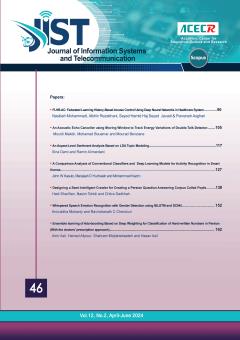Impulsive / hyperactive disorder is a neuro-developmental disorder that usually occurs in childhood, and in most cases parents find that the child is more active than usual and have problems such as lack of attention and concentration control. Because this problem might
More
Impulsive / hyperactive disorder is a neuro-developmental disorder that usually occurs in childhood, and in most cases parents find that the child is more active than usual and have problems such as lack of attention and concentration control. Because this problem might interfere with your own learning, work, and communication with others, it could be controlled by early diagnosis and treatment. Because the automatic recognition and classification of electroencephalography (EEG) signals is challenging due to the large variation in time features and signal frequency, the present study attempts to provide an efficient method for diagnosing hyperactive patients. The proposed method is that first, the recorded brain signals of hyperactive subjects are read from the input and in order to the signals to be converted from time range to frequency range, Fast Fourier Transform (FFT) is used. Also, to select an effective feature to check hyperactive subjects from healthy ones, the peak frequency (PF) is applied. Then, to select the features, principal component analysis and without principal component analysis will be used. In the final step, convolutional neural networks (CNNs) will be utilized to calculate the recognition rate of individuals with hyperactivity. For model efficiency, this model is compared to the models of K- nearest neighbors (KNN), and multilayer perceptron (MLP). The results show that the best method is to use feature selection by principal component analysis and classification of CNNs and the recognition rate of individuals with ADHD from healthy ones is equal to 91%.
Manuscript profile


